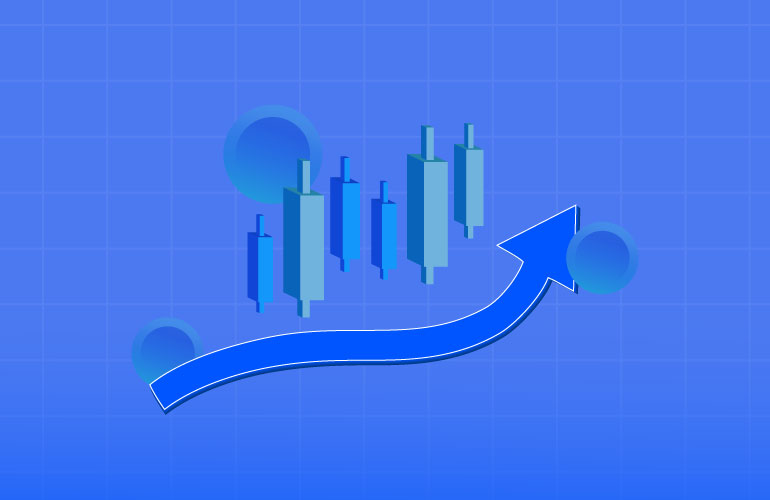Introduction
Timing is everything in crypto trading—and the Stochastic Oscillator can help you master it. This momentum-based indicator helps identify overbought and oversold zones, giving traders a potential edge in predicting reversals and confirming entries. In this blog, we’ll explore what the stochastic indicator is, how it works, and how you can use it effectively on Pi42’s zero-fee crypto futures platform.
What is the Stochastic Oscillator?
Developed by George Lane, the Stochastic Oscillator compares a crypto asset’s closing price to its price range over a specific time period. It consists of two lines:
- %K Line: Measures current closing price relative to the recent high-low range
- %D Line: A 3-period moving average of the %K line (signal line)
Scale: 0 to 100
- Above 80: Overbought (possible sell)
- Below 20: Oversold (possible buy)
How to Use the Stochastic Indicator in Crypto Trading
1. Overbought/Oversold Signals
- %K above 80 = potential trend exhaustion
- %K below 20 = potential trend reversal
2. Signal Line Crossovers
- Bullish Signal: %K crosses above %D from below 20
- Bearish Signal: %K crosses below %D from above 80
3. Divergence Detection
- Price making higher highs, Stochastic making lower highs = Bearish divergence
- Price making lower lows, Stochastic making higher lows = Bullish divergence
How to Use the Stochastic Oscillator on Pi42
Pi42, India’s first crypto futures platform with zero trading fees, lets you apply the Stochastic Oscillator seamlessly in live charts:
Step 1: Log in at pi42.com and open your preferred crypto futures chart.
Step 2: Click on “Indicators” and search for “Stochastic Oscillator.”
Step 3: Apply it with the default setting (14, 3, 3) or adjust for your strategy.
Step 4: Watch for crossovers, zone touches, or divergences to time entries.
Step 5: Combine with trendlines, support/resistance, or MACD for confirmation.
Stochastic Trading Strategies for Crypto
Strategy 1: Overbought/Oversold Scalping
- Buy when %K crosses above %D in oversold zone (<20)
- Sell when %K crosses below %D in overbought zone (>80)
Best used in ranging markets or short-term timeframes like 5-min or 15-min charts.
Strategy 2: Trend Continuation Setup
- Enter long if Stochastic resets from 50–60 zone after minor pullback
- Avoid entering during sideways chop
This setup works well in strong trending markets where quick retracements offer re-entry opportunities.
Strategy 3: Divergence Reversal Setup
- Combine bullish/bearish divergence with RSI or MACD for multi-signal confirmation
Stacking confluences boosts your edge and filters out false signals.
Limitations of the Stochastic Indicator
- May Give False Signals in Trending Markets: During strong up/downtrends on higher timeframes, overbought/oversold signals can be misleading.
- This tool is not effective on its own; it works best when used in conjunction with volume or trend indicators.
- Lagging Nature: Based on past prices, may delay during high volatility moves.
Always apply proper risk management and confirm with multiple tools.
Conclusion
The Stochastic Oscillator is a powerful momentum tool that can help crypto traders catch early reversals and validate signals. When paired with other indicators, it becomes even more effective. With Pi42’s seamless trading interface and zero trading fees, applying indicators like Stochastic is easy, intuitive, and cost-effective. Mastering momentum can be the difference between reacting to price and anticipating it—and the Stochastic Oscillator helps you do just that.
FAQ
What’s the best setting for the Stochastic Oscillator in crypto?
The default (14, 3, 3) works well. Short-term traders may opt for faster settings, like (5, 3, 3).
Can I use Stochastic for intraday trading?
Yes, it’s widely used on 5-minute to 1-hour charts to capture momentum shifts.
How is it different from RSI?
While both measure momentum, Stochastic focuses on price relative to range, whereas RSI measures speed and change of price movements.
Is the Stochastic Indicator reliable for crypto trading?
Yes, the Stochastic Indicator is widely used by crypto traders to confirm momentum shifts and potential reversals, especially when combined with other tools.

